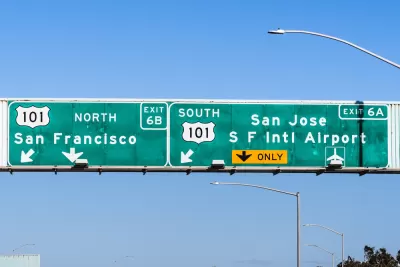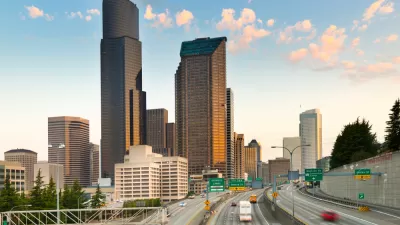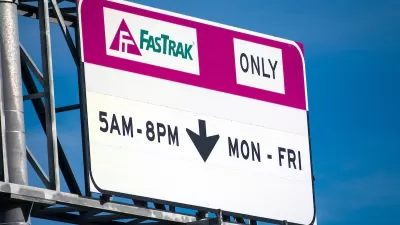Induced demand strikes again.

A two-phase project to add capacity to Highway 101 where it crosses the San Francisco Peninsula spent $600 million and so far has accomplished no progress on congestion, according to a recent article by Roger Ruddick for Streetsblog San Francisco.
The first phase of the project opened in February 2022, with the second phase opening in March 2023. According to locals, however, congestion on the stretch of highway between San Bruno and Palo Alto is unchanged, however.
Rudick quotes Mike Swire, a Peninsula advocate and member of the Citizen’s Advisory Committee of the San Mateo County Transit Authority, who describes the congestion on Highway 101 as only getting worse. "At what point do we stop doing something we know isn't working?" asks Swire in the article.
The project spent $600 million to add Express Lanes along the 15-mile stretch, one of two direct freeway connections between San Francisco and the Silicon Valley. The article characterizes the widening of little to no avail as a repetition of a theme in California.
“This is a continually repeating pattern with freeway widening projects: think of the Oakland Alameda Access Project, a project to massively increase the size of a ramp complex in South San Francisco, or the widening of Los Angeles's 405 freeway, or many other freeway widening and road capacity projects,” writes Rudick of the ability of induced demand to overwhelm all automobile infrastructure capacity in the Bay Area.
It must be noted that no data to back up the figures about congestion on Highway 101 are included.
FULL STORY: Not a Surprise: 101 Freeway Widening Shows Negative Results

Planetizen Federal Action Tracker
A weekly monitor of how Trump’s orders and actions are impacting planners and planning in America.

Chicago’s Ghost Rails
Just beneath the surface of the modern city lie the remnants of its expansive early 20th-century streetcar system.

San Antonio and Austin are Fusing Into one Massive Megaregion
The region spanning the two central Texas cities is growing fast, posing challenges for local infrastructure and water supplies.

Since Zion's Shuttles Went Electric “The Smog is Gone”
Visitors to Zion National Park can enjoy the canyon via the nation’s first fully electric park shuttle system.

Trump Distributing DOT Safety Funds at 1/10 Rate of Biden
Funds for Safe Streets and other transportation safety and equity programs are being held up by administrative reviews and conflicts with the Trump administration’s priorities.

German Cities Subsidize Taxis for Women Amid Wave of Violence
Free or low-cost taxi rides can help women navigate cities more safely, but critics say the programs don't address the root causes of violence against women.
Urban Design for Planners 1: Software Tools
This six-course series explores essential urban design concepts using open source software and equips planners with the tools they need to participate fully in the urban design process.
Planning for Universal Design
Learn the tools for implementing Universal Design in planning regulations.
planning NEXT
Appalachian Highlands Housing Partners
Mpact (founded as Rail~Volution)
City of Camden Redevelopment Agency
City of Astoria
City of Portland
City of Laramie





























